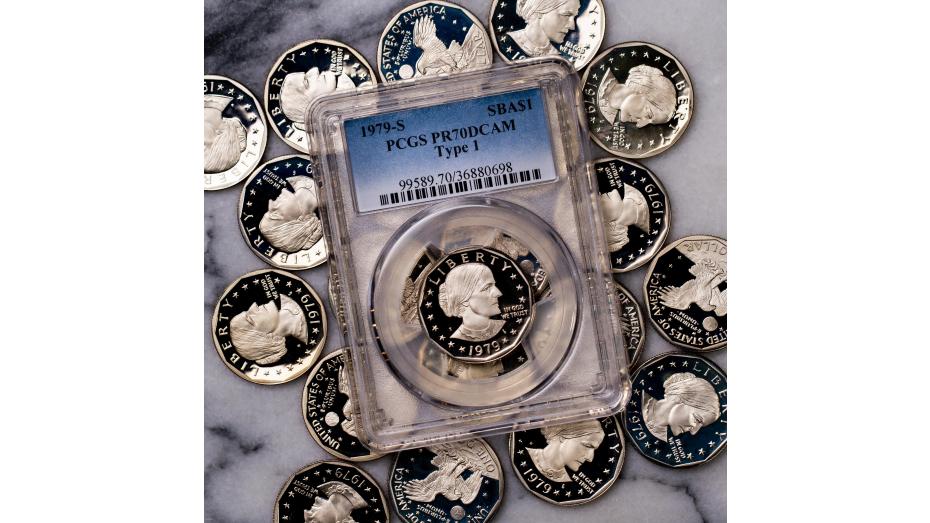The Legacy of the Groundbreaking Susan B. Anthony Dollar
Released just before America’s 203rd anniversary of becoming a nation, the Susan B. Anthony Dollar entered circulation on July 2, 1979. While the Eisenhower Dollar had been struck since 1971, its large size made it cumbersome to carry around. A study done by the Treasury Department showed that a smaller dollar coin replacing half of the paper dollars produced could save over $19 million in production costs. With all that in mind, the U.S. Mint went to work.
Chief Engraver of the U.S. Mint Frank Gasparro had created both the obverse and the reverse of the Eisenhower Dollar, and began designs for a new, smaller dollar coin in 1976. This coin would have an image of Liberty with a Phrygian cap on the obverse, in honor of the Liberty Cap Cent of 1794. The reverse was to feature a majestic eagle flying over a rising sun, which Gasparro thought was symbolic of “a new day being born.”
Both the Senate and the House of Representatives introduced bills that would authorize the new smaller dollar coinage except with the added requirement that famous women’s rights activist Susan B. Anthony be depicted on the obverse. This sentiment was echoed by letters sent to the mint from members of the public. Anthony was the driving force behind the 19th Amendment, allowing women the right to vote in 1920.
Returning to the drawing board, Gasparro referenced many images of Susan B. Anthony in order to create her likeness. Designs featuring her in her youth and in old age were both rejected by Anthony’s grand-niece, inspiring Gasparro to depict her at the height of her fame. On designing the first circulating coin to feature a female American citizen , Gasparro understood the importance, calling it his “top achievement.”
To distinguish the Susan B. Anthony Dollar from the half dollar, the Mint initially wanted to create it in a unique shape with as many as 8 or 13 sides. Vending machine companies strongly opposed a coin of a new shape as it would require their machines to be redesigned to accept a new format of coinage. In the end, a round design was used with an eleven-sided inner border to help identification by touch.
In 1979, The Mint struck over 600 million Anthony Dollars in their first year of issue. For the first time since Jefferson Nickels produced during World War II , Anthony Dollars struck at the Philadelphia Mint featured a P Mintmark. This practice would carry over to all other circulating coinage except cents. Public reaction to the new dollar coin was mixed, with many people confusing it for the quarter due to its similar size and composition. After 3 years, production of the Anthony Dollar was suspended in 1981.
Unable to melt the coins due to cost, the Mint decided to keep the large number of Anthony Dollars and disperse them when needed. When it opened in 1984, the Baltimore Subway used Anthony Dollars as tokens, becoming the single greatest user of the coinage. Demand for a dollar coin slowly increased due to more widespread use of public transit and vending machines. In 1999, the Susan B. Anthony Dollar was struck once again for one year only.
Seeing the need for a new dollar coin, the U.S. Mint took steps to completely redesign the denomination. In 2000, the Sacagawea Dollar began mintage with a size and composition different from the Susan B. Anthony Dollar . For numismatists, the Susan B. Anthony Dollar makes a great set to collect since there are only 18 coins in the issue. Even with just 4 years of mintage, the Susan B. Anthony Dollar still broke barriers and paved the way for more women to be depicted on American currency.






